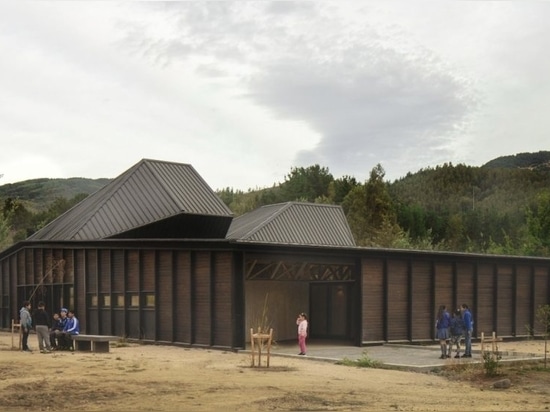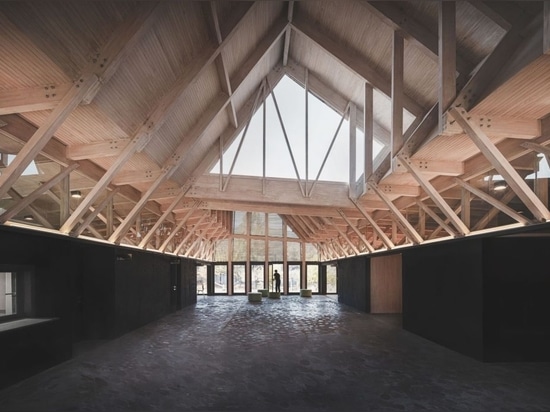
#PUBLIC ARCHITECTURE PROJECTS
Rural school Pivadenco . Los Sauces
The Pivadenco School is part of the Rural Schools of Araucanía project, an initiative of the Ministry of Education that proposed the development of 8 small schools in rural areas of this region, the poorest in Chile, with a high percentage of Mapuche population and an unresolved historical conflict that is worsening.
Our offices developed four schools, two in the commune of Los Sauces and two in the commune of Melipeuco, territories with diverse communities that required schools with an intercultural approach. In these scattered rural territories, the school is the center of community life.
Based on this, a common strategy was sought for the four schools, based on understanding the building not only as an educational center but also as the social center of a territory. To enhance this idea, all the common use and recreation programs proposed in the Ministry’s requirements, such as the dining room, circulation areas, the entrance hall, and the covered patio, were gathered in a unique space.
Thus, a hierarchical space was created, capable of organizing the other rooms, connecting with the outside, and adapting to accommodate different educational and social activities. In addition, to achieve greater adaptability and fluidity, the boundaries between this central space and the classrooms were blurred through sliding gates that allow integration and flexibility of use.
Formally, the building is associated with the region’s old productive sheds and their materials, but from a contemporary perspective, using metal cladding, wooden structures, and volcanic stone from the site. Its location seeks to organize the land by providing 3 areas with different uses, a public access square that accentuates the idea of openness to the community and allows for events and meetings, a play and sports area for children, and a complementary educational area with native flora, fruit trees, and vegetables.
Finally, seeking energy efficiency and thermal comfort for the school, it is defined that the central space also acts as a thermoregulator of the building in winter and summer, through 3 elements: i) skylights that capture indirect natural light from the north in summer and direct sunlight in winter to collect temperature, ii) concrete walls as a thermal mass that absorbs this heat during sunlight hours and delivers it throughout the rest of the day, and iii) a cross-ventilation system that significantly lowers the interior temperature in summer.





